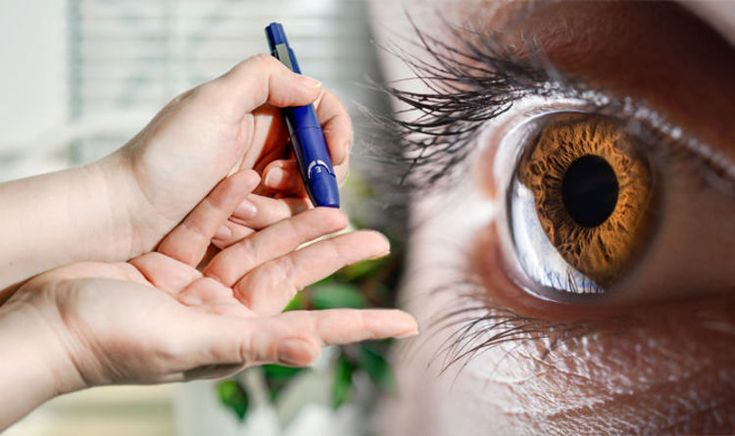Diabetes and Eye Health
Diabetes is one of the common diseases among millions of people, although most may associate with a tendency to change their blood sugar levels. It is actually a very hazardous threat to eye health. Sugar levels can cause damage in almost every part of the body but, in the case of the eyes, that damage can result in the complete loss of vision or partial vision loss if left undiagnosed for longer periods.
Check Out:
What are the worst fruits for someone with diabetes
Diabetes primarily affects the eyes because of its effect on blood vessels. The eyes contain tiny, thin blood vessels which are very crucial to maintain healthy vision. Long-term accumulation of sugar in the blood can damage these thin blood vessels and cause various eye complications.
Role of Blood Sugar in Eye Health
Blood sugar is an important constituent in the regulation of all the functions in our body, but when imbalanced, it gives rise to problems in all the parts of the body. High blood sugar causes injuries to the walls of the blood vessels in diabetic people. Not only large vessels bear the brunt of such damage but the smallest capillaries, even those present in the retina of the eye that processes the light.
How High Blood Sugar Affects Your Blood Vessels in the Eyes
Fluid can leak out of these minute, weak blood vessels in the retina through high blood sugar over time, causing swelling and interfering with vision. It is at this stage that the body attempts to repair the damage and commences producing new blood vessels, which often are weak and tend to produce minute bleeds or hemorrhages, thus creating even more problems. It is this spillover that often causes common diabetic eye diseases.
Common Diabetic Eye Diseases
Several eye issues are directly linked with diabetes. Though these can be treated and managed, in their unrestricted form, they pose major dangers.
Diabetic Retinopathy: The leading cause
Diabetic retinopathyis one of the leading and significant non-trivial complications of diabetes. It occurs through retinal blood vessel breakup due to effects of high blood glucose concentration. Seventy to eighty percent of patients with retinopathy have no early signs and symptoms; nevertheless, when they progress, symptoms may involve reduced vision, floaters and in some cases, progression to complete vision loss.
Diabetic Macular Edema
DME is an entirely unique type of Diabetes Retinopathy whereby there is intraretinal oedema in the macula of the retina which is the part that defines Clear central vision. Thus, when there is leakage into the macula, the swelling defeats the central vision. DME results in blindness and remains the major cause of blindness for persons who have diabetes. Symptoms of macular edema first appear in the later stages of DR.
Eye Disease; Glaucoma and Cataracts in Diabetics
Diabetes also has another side effect of causing both glaucoma, and cataracts. It is a disease characterised by raised intraocular pressure, or the presence of rising eye pressure that has a negative impact on the optic nerve. On the other hand, cataract, specifically refers to a situation whereby the lens of the eye becomes blurred and a person is unable to see properly. Both can develop when a person has diabetes, and, especially most in cases where the blood sugar cannot be controlled.
Symptoms of Diabetic Eye Disease
Diabetic eye diseases are often silent progressors; however, noticing symptoms early is the best way to prevent severe complications. It’s something of importance to learn and know.
Early Warning Signs to Watch For
The initial signs of diabetic retinopathy are mostly as follows, blurry vision, small dark shapes or grey shadows in one’s vision, difficulty seeing at night and changes in their appreciation of color. If you ever get such signs, make sure you visit an eye healthcare provider.
When to Seek Immediate Care
If you begin to have sudden vision loss, flashes of light, or an increased number of floaters you see, seek medical attention immediately. These can be signs of an advanced retinopathy or a detached retina that will require treatment before vision loss becomes permanent.
Risk Factors and Prevention
Diabetes makes you prone to eye complication; however you can prevent your eyes from these diseases and reduce the severity of their consequences.
Managing Blood Sugar Levels
Actually, one of the best ways to reduce diabetic eye disease risks is by maintaining the healthy and steady range of blood sugars. There are various components in a balanced diet that would require exercise and medication intake as prescribed for stable blood sugar levels, thus minimising strain upon the blood vessels of the eyes.
Routine Eye Examinations in Diabetics
It is through early routine eye exams that diabetic eye diseases can be diagnosed. Experts advise every diabetic to get a comprehensive eye exam annually. This will help your eye doctor to enlarge the pupils such that she/he can thoroughly study the retina to see if there is some disease progression occurring.
Much treatment will need to be done when diabetic eye disease is diagnosed. Laser therapy can seal off leaking blood vessels and prevent further damage when a retinopathy patient is concerned. Medications injected into the eye reduce swelling associated with DME. Surgery may become an option in advanced cases of retinopathy or glaucoma. Your eye doctor will develop a treatment plan with you.


